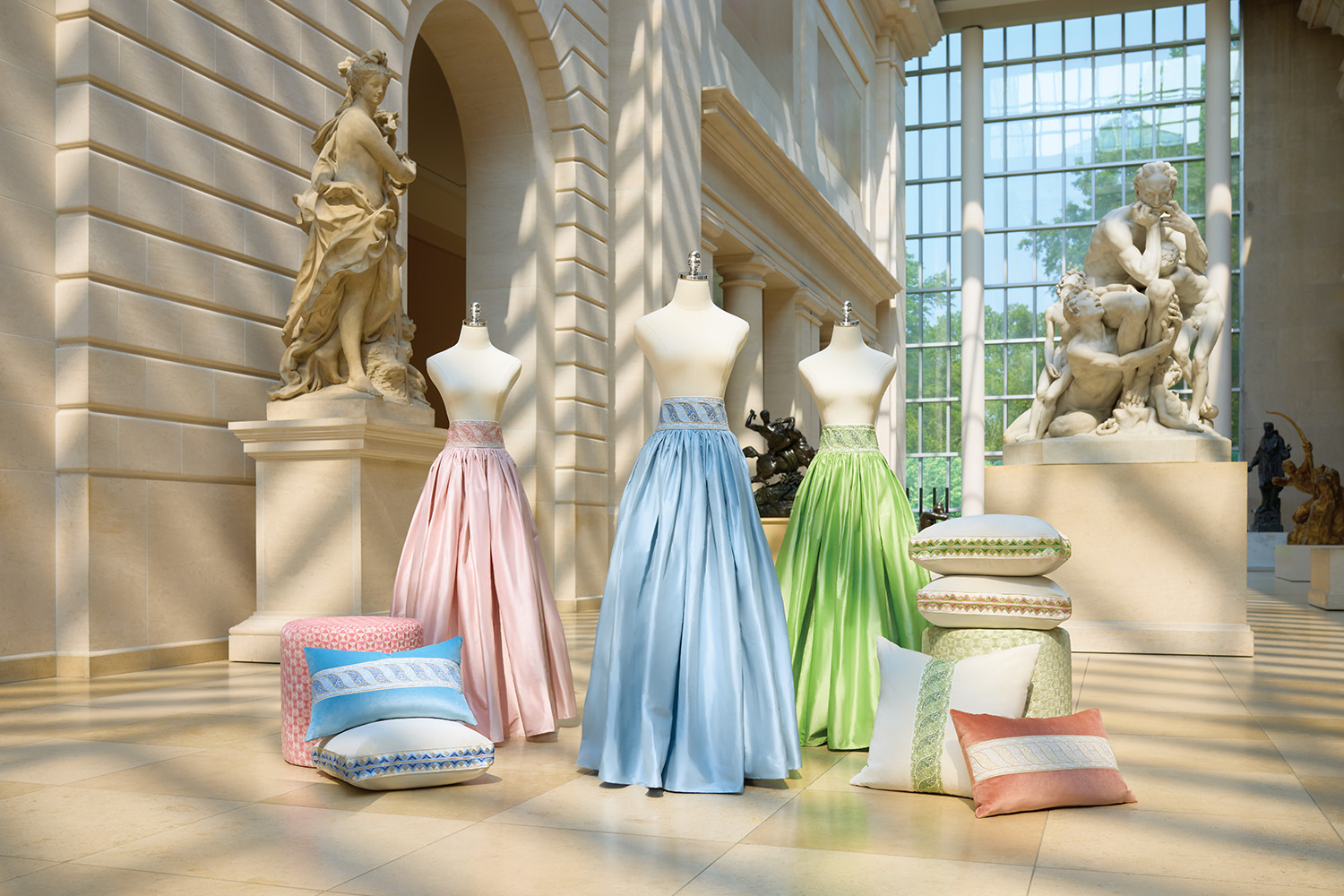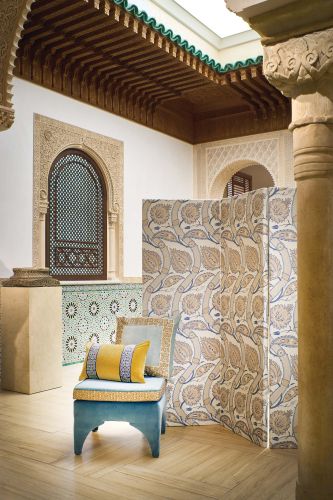It’s not every day that someone receives full access to one of the world’s largest and finest art museums’ inventory and archives, but an every-half-century invitation will suffice. Following its first collaboration with The Metropolitan Museum of Art in the 1970s, American heritage brand Scalamandré introduces its newest landmark collaboration.

Photo by Kip Dawkins Photography
It’s been 100 years since Franco Scalamandré immigrated to America from Italy and began his work with Westinghouse Electric Company in New Jersey. He transitioned into a role as a draftsman and later as a teacher at the Sealy School of Interior Design. There, he discovered the demand for fi ne silk fabrics and decided to produce his own silk yardage, beginning with one weaver and one loom. Soon after, in 1929, his eponymous fabric house was born.

Photo courtesy of Scalamandré
Deeply rooted in luxury and high-end design with its fine fabrics, wallcoverings, and trimmings, Scalamandré garnered national attention, including for its work with the White House dating back to the Kennedy years. With a passion for reproducing historic textiles, Franco began a collection of historic fabric restoration projects completed by Scalamandré. Eventually, these textiles became showcase pieces at the company’s own museum. Several of those displayed pieces were later donated to The Met’s archives.
Fast-forward to present day, and a collaboration between the two institutes came by way of natural selection. This go-round, the textile house delves deeper into the museum’s 5,000 years of archived work, paying homage to not only history but also to the legacy of Scalamandré and its founder.
Charged with a daunting task, the Scalamandré studio combed through thousands of archival heirlooms to create a colorful mosaic of historical narratives. “For this rich and rewarding collaboration between The Metropolitan Museum of Art and Scalamandré, we chose to develop designs from those in their galleries and others that are secreted away in their archives,” says Lorraine Lang, Scalamandré’s executive vice president of design.

Photo by Kip Dawkins
Drawing inspiration from historical artifacts, including 16th-century German field and tournament armor and Indian dyed wall hangings and bed coverings dating back to the early 18th century, The Met collection for Scalamandré is a breathtaking celebration of past and present. With more than 90 pieces in its lineup, the collection draws on artwork and objects from 8 of The Met’s 17 curatorial departments, including work inspired from its Asian art department. In the 18th century, Indian-dyed cloths known as palampores were a regular feature of the chintz trade to Europe. They were prized as wall hangings and as bed and table coverings, and they typically show a central flower-and-fruitbearing serpentine tree emerging from a hillock with stylized peaks or rocks. “We created Metropolitan Palampore by re-creating a very detailed palampore from Sri Lanka, whose intricate line work was originally drawn with mordant and then hand-painted,” Lorraine says. “We faithfully copied this tree of life bedcovering pattern to become a bordered wall mural and as an all-over printed fabric. Its scale is grand, and, in the new contemporary colors, it is very eye-catching.” Scalamandré’s ability to absorb the breadth of the museum’s inventory of period pieces and reimagine them into the authentic and artful collection that is presented today is as inspiring as it is humbling. Each piece is an expression of artisanship, inspired by exquisite forms and cultural traditions.
By Ashley Hotham Cox



